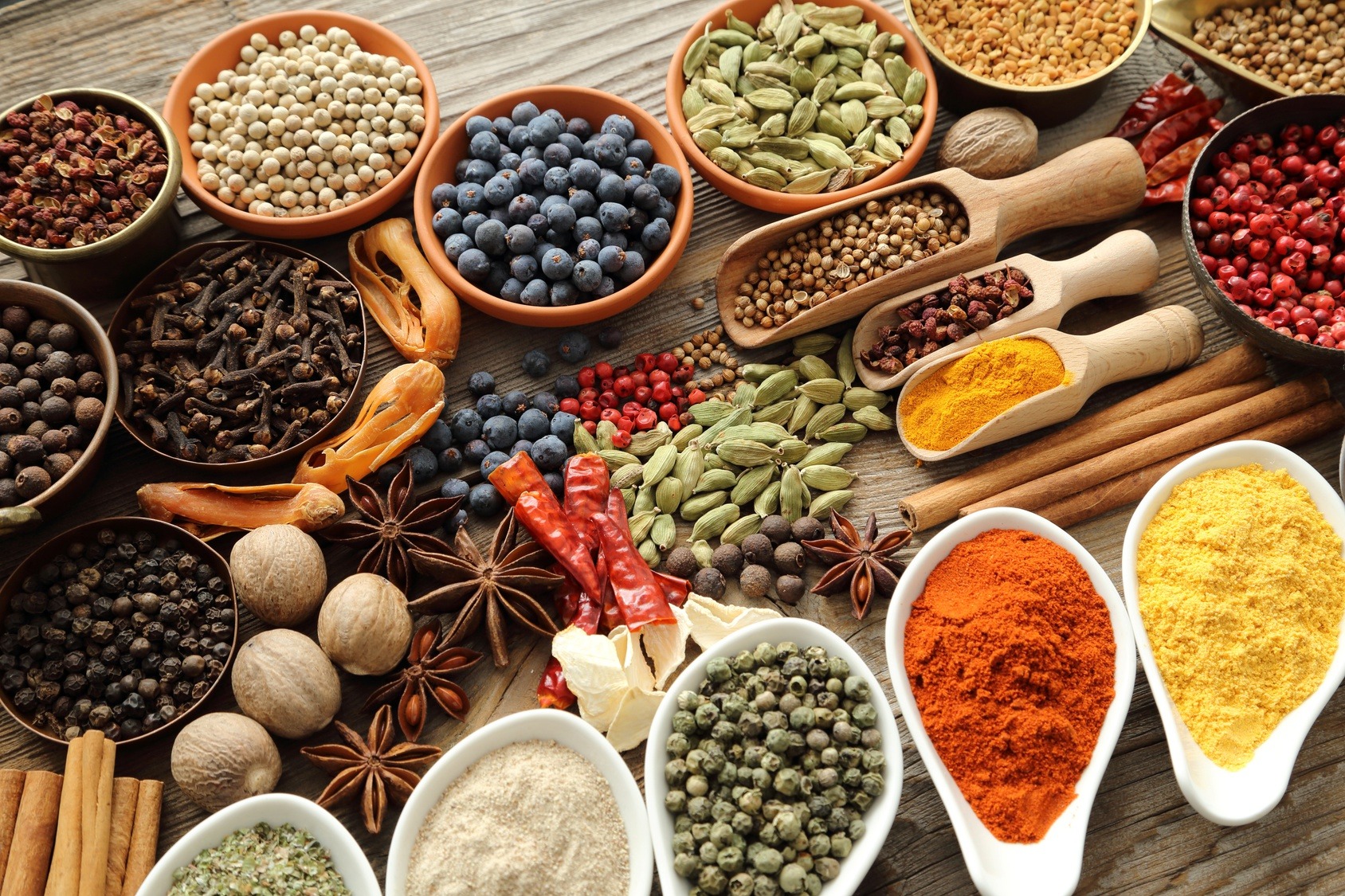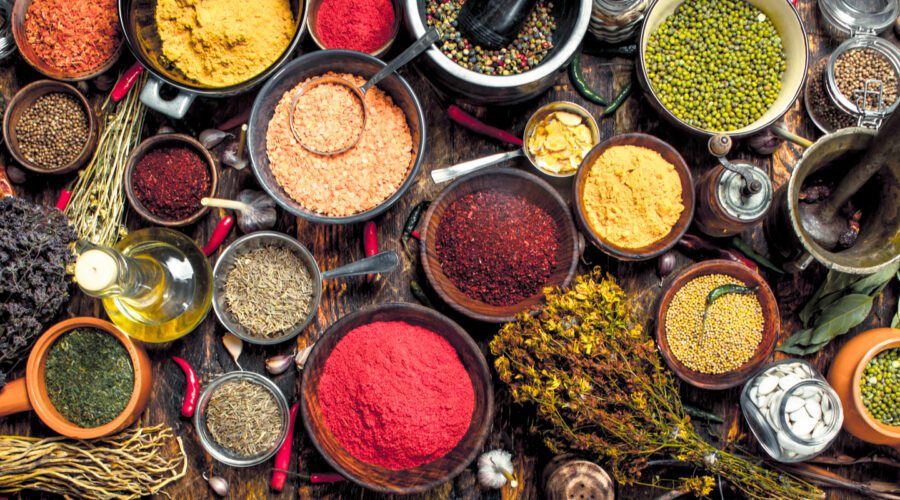But it doesn't stop there - Belovedsaffron.com is also about promoting sustainable eating that respects people from different cultures who dedicate their lives to serving delicious food at family homes or five-star restaurants around the globe.
If you ever want to share your secret recipe or contribute an article to our blog section – don't hesitate to reach out at [email protected]. We believe everyone has something extraordinary and delicious to offer their taste buds! So come join us today and together let's make every experience an unforgettable flavourful adventure!
For now, love yourself and enjoy this one ...
The winter is a season of sniffles, sneezes and colds. Winter spices can help you fight the flu and colds. While it is impossible to avoid them completely, they are a tasty way to combat these seasonal ailments. This article will explore how to use winter spices to combat colds and flu and integrate them seamlessly into your winter meals.
Ginger: The Warming Warrior
Ginger's anti-inflammatory properties and immunity-boosting qualities have been well-known for a long time. Add freshly grated ginger into hot teas, soups or stir-fries to enhance the flavor and to help fight winter illness.
Turmeric, the Golden Guardian
Turmeric is known for its golden color. It contains curcumin which has powerful anti-inflammatory properties and antioxidant properties. Add turmeric to stews or soups for a warming and immune-boosting winter drink.
Garlic, Nature's Antibiotic
Garlic is one of the best spices for fighting colds and flu during winter. Garlic contains allicin, which is antimicrobial and antiviral. It's a great ally against colds and the flu. Use minced garlic to boost your immune system in salad dressings, sautés, and roasted vegetables.
Cinnamon: Sweet Defence
Cinnamon has antioxidant and antimicrobial properties. Add cinnamon to oatmeal, baked goods or your morning coffee for a boost in immunity.
Cayenne Pepper: Spice Up Your Immunity
Cayenne pepper is rich in capsaicin which has been shown to relieve cold symptoms and clear up congestion. Add cayenne pepper to sauces, soups or hot chocolates for a spicy kick and boost your immune system.
Lemon: Vitamin C Boost
Lemon is not a spice but it's a citrus powerhouse that's rich in vitamin C. Add it to your tea or marinades for a boost to the immune system.
Oregano: Herbaceous Defence
Oregano is rich in compounds such as carvacrol and the antimicrobial thymol. Use dried oregano in pasta sauces or sprinkle it on roasted vegetables. You can also infuse olive oil with it to create a tasty and immune-boosting seasoning.
Cloves: Aromatic Immunity
Cloves have antimicrobial qualities, and aren't just for the holidays. Add cloves to sweet or savory dishes. Infuse them with hot drinks. Or, include them in spice mixes to boost your immune system.
Winter Spices in Your Diet
Spiced teas: Add a little cinnamon or cayenne to ginger or turmeric for a warm and immune-boosting drink.
Soups & Stews: Add garlic, ginger and oregano to your soups & stews to enhance the flavor, as well as boost immunity.
Golden Milk Lattes Combine turmeric, ginger and black pepper to create a soothing golden milk latte. This will enhance the absorption of curcumin.
Roasted vegetables: Sprinkle cloves or cinnamon on sweet potatoes and carrots roasted to create a healthy side dish.
Spiced Smoothies Add fresh ginger and cayenne to your morning smoothies to give them a spicy, immune-boosting kick.
Winter spices can help you strengthen your immune system and protect against common colds and flu. These spices are great for immunity, from the warming properties in ginger to the golden goodness in turmeric. Try out these spices in your kitchen and enjoy the tasty journey towards a healthier winter. You'll be rewarded with a healthier winter season and a better immune system.
Frequently Asked Questions
What are the best Thai spices?
Galangal (lemongrass), coriander, turmeric and cinnamon are the best Thai spice. You can also use clove, cardamom black peppercorn, clove, cardamom clove, cardamom, fennel seed, star anise, cloves and cayenne pepper as spices.
Some other valuable spices include rose petals, bay leaves, curry leaves, pandan leaves, kaffir lime leaves, vanilla beans, tamarind pods, lemon grass, basil, and mint.
What is Thai spice used for?
Everyone has heard the term Thai spice, but not all know what it is. We are left wondering why we don't eat more Thai spice when our mouths water.
It's more than just a spice. It is an important ingredient that gives flavor and depth to bland dishes.
Many recipes call for Thai spice, but only a few have the actual thing. Let's discuss how to incorporate these tasty flavors into your meals.
Thais have been using spices and herbs to flavor food and drinks since ancient times. Thai, which means "to make", comes from the Sanskrit word.
Many Thais love spicy foods, even today. This preference is often due to the heat in Thailand which makes it difficult for people to stay warm without hot drinks. Thais are also more likely to consume chili peppers as compared to Americans or Europeans.
You can learn the most about Thai spices by visiting a local Asian grocery. You'll find many ingredients there, including fresh basil leaves, dried chilies and curry paste.
Whole peppercorns, whole cloves, cinnamon sticks and star anise may also be found.
Thai cuisine has two kinds of spices: wet and dry. The dry spices are usually ground while the wet spices are crushed or pounded finely.
Dry spices can be added to any dish. A good example is chicken soup with ground red pepper. Mixing wet spices with oil or butter can create a paste.
Wet spices can be used in sauces, dressings, and marinades. Wet spices are used in many dishes, including fish sauce, oyster, sesame, sesame, sesame oil and curry paste.
You need to be able to match certain spices with Thai ingredients if you wish to make Thai food at home.
For example, red pepper flakes is recommended for beef. Use white pepper instead if you have seafood such as shrimp.
If you don't live near an Asian market, you can order online. Here you will find everything, from dried chilies and exotic herbs to spices.
Next time you're hungry, try one of these delicious Thai recipes!
What spices are used to make Thai cuisine?
Thai cuisine is well-known for its rich flavour profiles. These flavours come from unique and flavorful spices that create various delicious dishes.
Thai cuisine uses common ingredients such as galangal (lemongrass), kaffir lime leaves and chillies.
Each spice adds to Thai cuisine's distinct flavour profile. Lemongrass is often used in soups, curries, and stews; galangal adds a slight peppery note to dishes; kaffir lime leaves impart a citrusy aroma; chillies provide a spicy kick; garlic adds a sharp and pungent flavour to dishes; shrimp paste adds an umami depth to food; coriander has a mild, yet fragrant aroma; cumin brings a smoky note to dishes; and turmeric gives food a vibrant yellow hue.
These spices create complex flavour profiles that are unique to Thai cuisine. By using a combination of spices, chefs can create dishes that are both flavorful and aromatic. If you're looking to bring the flavours of Thailand into your kitchen, be sure to stock up on these spices!
Almond Flour vs. Almond Meal. What's The Difference?
Almond meal can be substituted for almond flour and is versatile enough to be used in baking, cooking and even making nut-free meals.
Almond flour can also be gluten-containing, which can make it difficult to digest. If you have celiac disease or another digestive disorder, it's essential to avoid gluten-free foods.
Almond flour isn't considered "superfood", but it is high in healthy fats, fibres, protein, vitamin E, and sodium.
The almond meal provides nutritional benefits such as magnesium, iron, zinc and manganese. It also contains vitamin A, B1 (thiamin), C, and folate.
Almond flour, made from almonds contains monounsaturated and polyunsaturated oil. Both types reduce LDL (bad) cholesterol and increase HDL ("good") cholesterol.
Almond flour is also rich in antioxidants such as flavonoids and phenolics. These compounds protect against free radical-induced oxidative harm.
A study published by the Journal of Agricultural Food Chemistry revealed that almond flour had an antioxidant activity equal to that of blueberries.
Almond flour is typically sold along with almond milk, which is fortified to add additional nutrients.
Statistics
- According to Healthline, pink Himalayan salt is estimated to contain up to 84 minerals and trace elements, which gives the salt its special pink color. (spicecravings.com)
- According to a recent survey, professional chefs and many home cooks use spices; usage has only continued to grow from 2011 to now. (hospitalityinsights.ehl.edu)
- India contributes to 75% of global spice production. (en.wikipedia.org)
External Links
[TAG31]
[TAG34]
- Amazon.com. Spend less. Smile more.
- Amazon.com : Morton & Bassett Whole Nutmeg 1.9 Oz : Nutmeg Spices And Herbs : Grocery & Gourmet Food
[TAG37]
[TAG40]
- Validation and development of Novel Lifestyle Inflammation Scores. - PMC
- PubMed: Molecular mechanisms curcumins suppressing cancer angiogenesis, tumorigenesis, and metastasis. We focus on the NF-kB pathway.
How To
How to choose the right spices?
It is important to know how you can choose the right spices and herbs to cook. There are hundreds of choices, so where can you start when choosing which spices to add to your kitchen?
Three factors are important to consider when choosing spices. They are the taste profile, shelf live, and price. Flavour profiles differ depending on whether you're cooking meat, poultry, fish, vegetables, beans, grains, pasta, eggs, dessert, bread, etc. So once you've decided on a category, you'll need to narrow down your choices based on these differences.
You will also find that shelf lives can vary. Some spices are good for a lifetime, while others can be lost quickly. Cayenne pepper, for example, can last years while oregano, on the other hand, loses its potency within two months. The price is another factor. Spices can cost anywhere from $1 per tablespoon up to $100 per ounce. This means that you will need to strike a balance between quality and value.
Also, consider whether organic or not organic ingredients. Organic products are less chemically and pesticide-laden than other alternatives. They are better for your environment and health. However, they often cost more, so you'll need to weigh those costs against the benefits.
The best way to get the perfect spices for your home is to shop online. Online retailers offer comprehensive information about every product, including price, reviews, ratings, and ingredients.
Once you've narrowed your list, you can order directly from the retailer. Once you have received your items safely store them in an airtight container, away from heat & light.
Resources:
 |
[TAG43]LET ME KNOW IN THE COMMENT SECTION WHAT YOU ALL WOULD LIKE TO SEE ME TALK ABOUT IN OUR NEXT VIDEO | I REALLY APPRECIATE YOU ALL!! THANK YOU FOR 168K |
 |
[TAG44]Better Sleep, More Energy, Higher Consciousness - START YOUR FREE 2-WEEK FLFE TRIAL NOW (no credit card needed) https://tm179.isrefer.com/go/TryFLFEfree/In |
 |
[TAG45]My Recipe and Vlog Channel Link:- https://www.youtube.com/channel/UCi5pSJeRu1fbXK4bzIVgSkw Hello Friends, Welcome back to my another video! Today […] |
 |
[TAG46]definition of spices |
 |
[TAG47]CARDAMOM E-AUCTION SPICES BOARD OFFICIAL |
 |
[TAG48]This Is The Situation Room, Kenya's Biggest Conversation! HOSTS: Eric Latiff, Ndu Okoh & CT Muga PRODUCER: Ednah Ombaso EXECUTIVE PRODUCER: Tom |
 |
[TAG49]Subscribe to my channel ▶https://bit.ly/30eqjsu Uncle Rural Gourmet's secret recipe of hot pot, […] |
 |
[TAG50]Important spices in cooking |
 |
[TAG51]Just a quick live thank you to everyone who has supported this wacky little channel of ours. Join me (and whoever else on the team is still awake) to drink |
 |
[TAG52]India accidentally hired a DEA agent to kill American citizens, federal prosecutors allege. The DOJ filed charges against a man they allege was working with |
 |
[TAG53]https://www.letsdig18.com/ for shirts and more |
 |
[TAG54]Herbs, spice & everything nice, these blog and articles explain the many uses of spices, including spices for weight loss, spices for brewing, and how to store |
 |
[TAG55]something feels VERY WRONG!!! Link for Patreon/Discord community is here. This is to access our private community with weekly live calls and many other |
 |
[TAG56]Pepper imports in August were unusually high at 3,800 tonnesRising imports have kept black pepper prices steady in the domestic market over the past few days, |
 |
[TAG57]Plantation in São Mateus, Espirito SantoBrazil remains stable and firm; expected to slowlymove at upward trend. Still seeing difficulties in securing raw |
/spices-5689d3013df78ccc1533efad.jpg) |
[TAG58]spices | Visit our blog for recipes, cooking tips and techniques as well as our staff's favorite eats and travel adventures. |
 |
[TAG59]Over the past week, black pepper prices have slightly increased by about 1,5% from 73,000 - 74,000.The largest market, China, has resumed purchasing along |
 |
[TAG60]INTERNATIONAL cloves prices have held mostly firm in recent weeks as farmers at origin remain reluctant to lower their pricing ambitions and exporters appear |
 |
[TAG61]For the second year in a row Vietnam became the biggest importer of brazilian black pepper, overcoming traditional destinations like USA and also Germany.USA |
 |
[TAG62]This spice blog writes about Indian fenugreek, Canadian coriander, Egyptian dill weed, Syrian Aleppo pepper, Granada nutmeg, & more from around the world. |
 |
[TAG63]August 28, 2023Likely that Vietnam's pepper exports in the first 8 months of the year will reach around 183-185,000 tons. If the forecasted annual pepper |
 |
[TAG64]- In coming time, world pepper market will increase due to reduced supply (low price, low yield due to many old trees, reduced interest in farming due to |
 |
[TAG65]As prices of cardamom rise, India is in danger of losing its export markets to the cheaper Guatemalan cardamom. Even the upcoming festive season may not help |
 |
[TAG66]World of Spice is your online store for a massive range of High Quality Herbs Spices and Seasonings. Wholesale, Foodservice and Catering High Quality Herbs |
 |
[TAG67]KEY HIGHLIGHTSAugust 11th 2023The pepper market this week showed a mix response with only Malaysian local white pepper price reported with a decrease.The |
 |
[TAG68]As demand outstrips supply and imports become expensive, black pepper prices have risen, prompting growers to resort to hoarding in anticipation of bigger |
.png)





